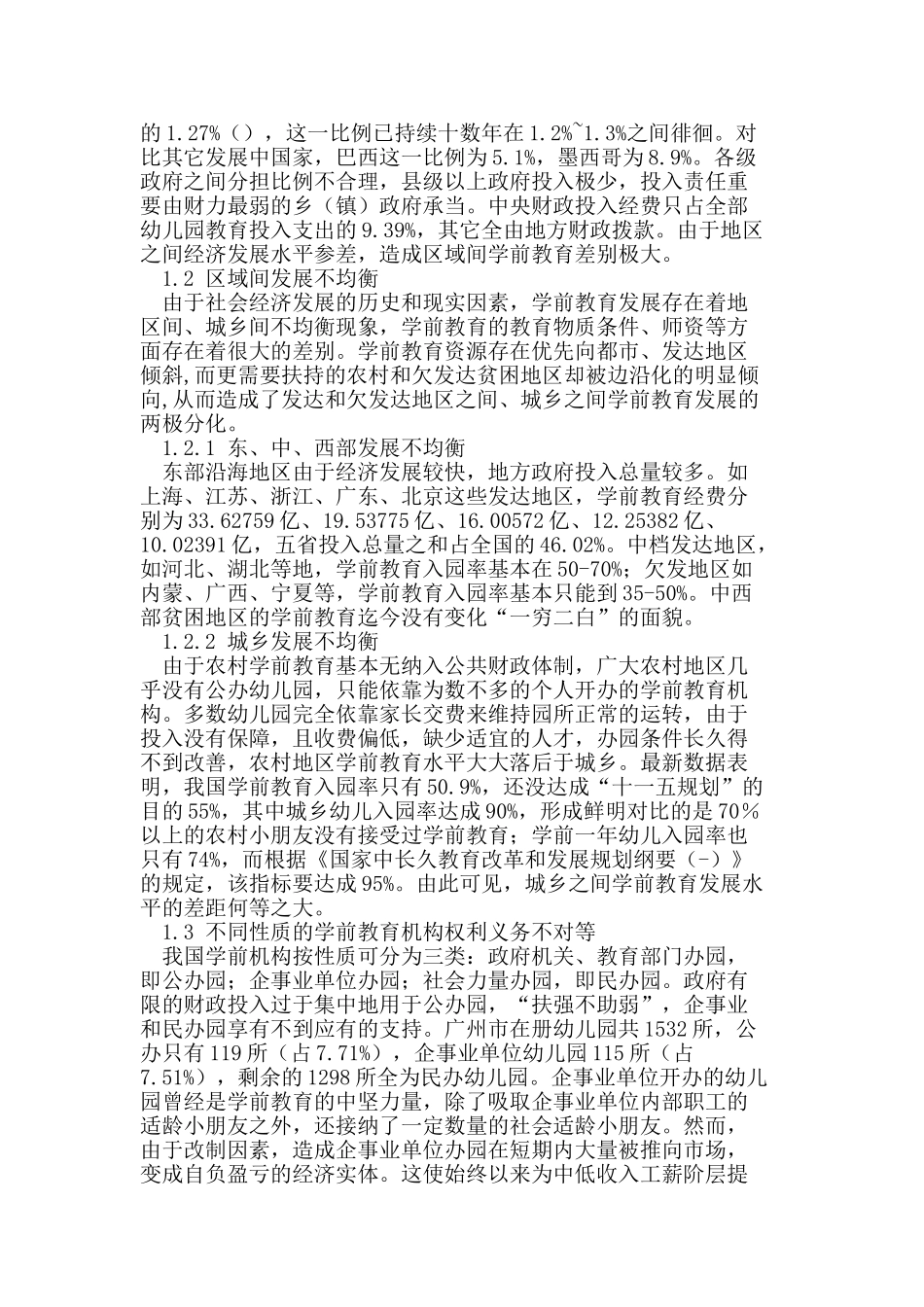我国学前教育现状与对策研究摘 要 现阶段我国教育发展水平远远跟不上经济发展水平,教育投入占 gdp 比例至今未达成 4%的既定目的。学前教育作为一种准公共产品,长久得不到应有的重视,学前教育财政支出只占总教育投入的 1.27%。通过对我国现阶段学前教育的现状及现存问题进行分析,提出适宜的对策,为增进学前教育的发展、推动国民素质的提高提供参考。核心词 学前教育 现状 对策pre-school status and countermeasures in chinalin shuo, zhou qianwen(business school of guangxi university, nanning, guangxi 530004)abstract development stage of china’s education is far behind the level of economic development, education and investment-gdp ratio has not reached 4% of the stated objectives. pre-school education as a quasi-public goods, without due attention to the long-term, pre-school spending only 1.27% of total investment in education. through our present situation and existing problems of pre-analyzed, and appropriate measures to promote the development of pre-school education, to promote the improvement of the quality of provided reference.key words pre-school education; status; countermeasures1 我国学前教育的现状与问题学前教育是含有强正外部效应的准公共产品,含有强社会公益性。各级政府的财政投入应当是提供这种准公共产品的最有力保障。改革开放后来,政府对学前教育的投入逐年增加,学前教育从无到有,从有到优。党的十七大报告指出,要“重视发展学前教育”。,我国学前教育机构数量达成 138209 所,在园接受学前教育的适龄小朋友有 26578141 人,专任幼儿教师 77 万人。1.1 国家财政投入力度严重局限性1993 年,中共中央、国务院制订的《中国教育改革和发展纲要》第 43 条明确规定:“逐步提高国家财政性教育经费支出占国民生产总值的比例,在本世纪末达成 4%。”迄今为止,该目的仍未实现。公布的最新数据为 3.59%,离 4%的目的尚有一定距离。今年出台的《国家中长久教育改革和发展规划纲要(-)》提出:“力求在实现国家财政性教育经费支出占国民生产总值的比例达成 4%。”而这部分教育投入的绝大部分,都投入到义务教育和高等教育当中。我...


